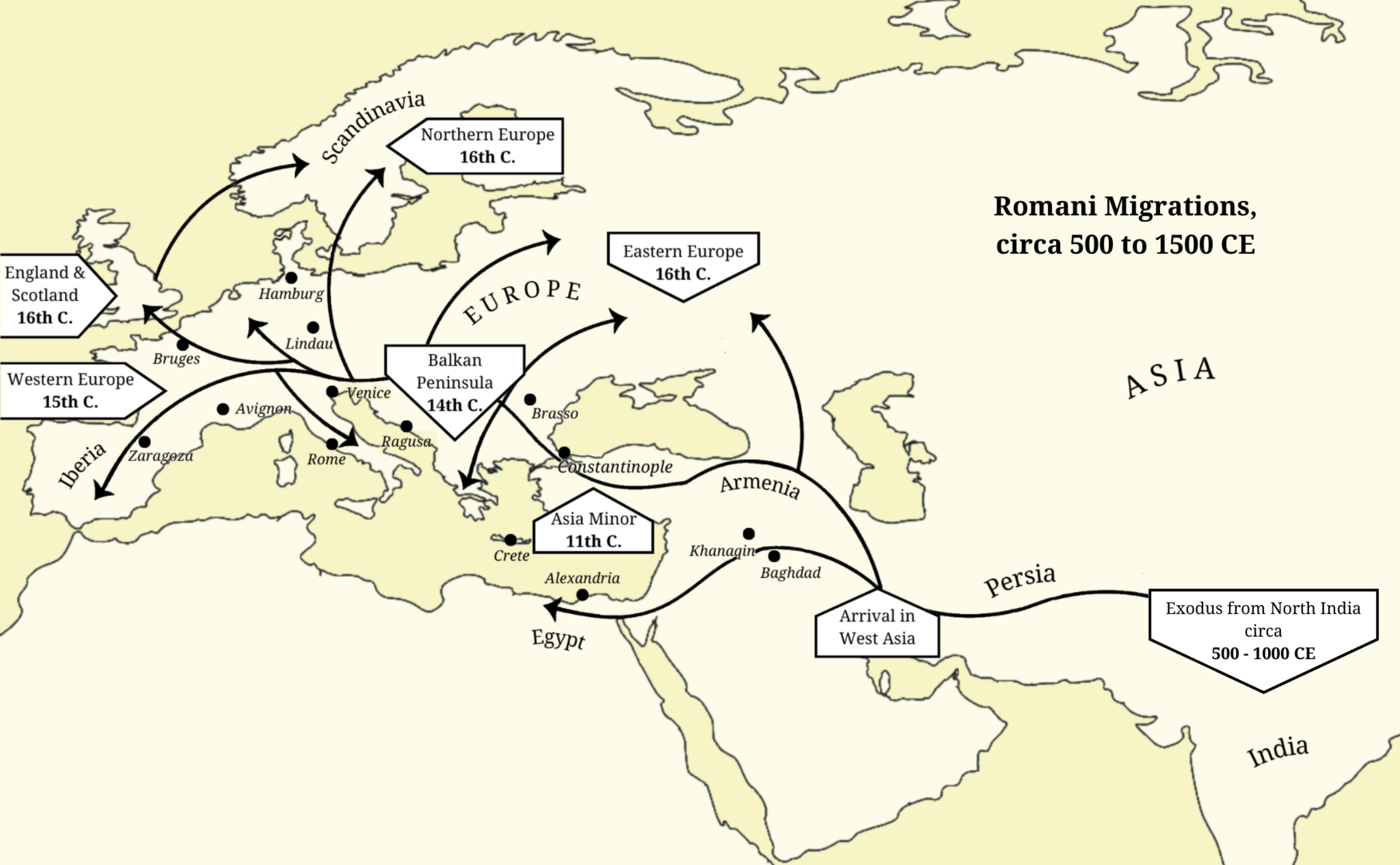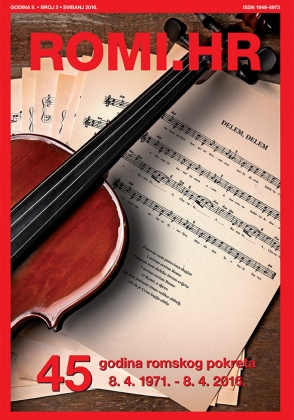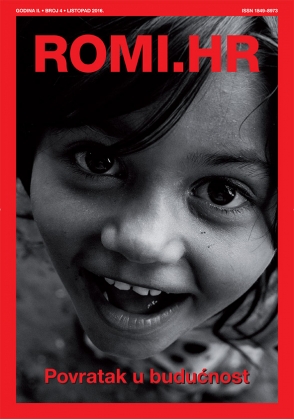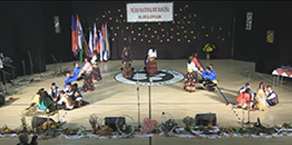Focus ROMI.HR
/Usually, when thinking about Romani in a historical context, the first thing that comes to mind is oppression in Europe and the Middle East, refusal of settlement and integration. However, this people settled in Armenia many centuries ago and have a completely different history.
Armenia is the Motherland of sun and apricots, a small Caucasian country surrounded by mountains. It has one of the oldest histories, dating back thousands of years. Located at the crossroads of the four sides of the horizon, this small state has seen a large number of peoples who came to their territory for both peaceful and invasive purposes. The Armenians were always a part of the Caucasian world on the one hand, and on the other, have close contacts with the Western Asian world. In the Middle Ages, evidence appears of economic and cultural ties with India, as a result of which the Armenian diaspora settled in India. In Armenia, in turn, the Romani settled among the Indo-Aryan peoples.
Traditionally, Armenia is a national state of Armenian people. However, despite the fact that the number of Armenians predominates over all others, many national minorities live in the state, for example, Jews, Greeks, Russians, Ukrainians, Kurds, Yezidis, as well as a unique ethnic group - Lom, part of the Romani people.
Usually, when thinking about Romani in a historical context, the first things that come to mind are oppression in Europe and the Middle East, poverty and exclusion, refusal of settlement and integration. However, this people settled in Armenia many centuries ago and have a completely different history.
Lom are also known by the name Bosha (Armenian) or Posha (Turkish), although the latter two names are derogatory for the people, and they prefer to be called by their own name. The original name of this ethnic group was “Gnchu” (in western Armenian dialect) or Knchu (in eastern Armenian dialect), which translated from Armenian means “to stutter” and referred to the uncertainty in religious practices. Only since the 19th century did “Gnchu” begin to bear the name “Bosh” for the local population (Armenian - “tramp”, Turkic - “poor”). The self-name of the ethnic group - “Lom” presumably comes from the word Dumba/Domba (Sanskrit) also known as Domra, Dombari, Domaka, Dombara, are groups scattered across India. People of those group belonged to the same caste of Dom/Doma - a man of Dalit caste, living by singing and music. Historically, they were considered an untouchable (lowest) caste called the Dalits and their traditional occupation was the disposal and cremation of dead bodies. Untouchability in India is a social form of institution and refers to the enforcement of practicies that are humiliating, discriminatory, exclusive.
It is generally accepted that the words Rom, Lom and Dom have the same roots as the groups themselves. The peculiarity about Loms lies in their exceptional tolerance, which led to putting down roots in Armenia. On the one hand, by many characteristics the group is fully assimilated now. For this reason, Loms today are almost indistinguishable from Armenians, and many Armenians, in turn, do not know about the existence of this ethnic group. On the other hand, the interesting fact about the Loms is that they still can stick together choosing the same neighbourhood for living and striving to marry people of their origin, while they will never tell openly that they are different from the rest population.
Based on the scholars Elena Marushiakova and Vesselin Popov, the Romani arrived from India approximately in the 10th and 11th centuries. The fact of whether Roma, Dom and Lom were part of the same migration remains under discussion to this day.
According to recent research in the field of ethnology, the Lom arrived in Armenia no later than the 12th century due to migration across the Iranian plateau from the central and northwestern parts of the Indian Peninsula. Their ancestors migrated from the north-west of the Indian Peninsula to Persia staying there for a long period of time. After which, one of the Romani group stopped in the territory of Armenia and Asia Minor while other moved on further. One historical suggestion for why the Loms ended up there is that they migrated to the Caucasus as refugees during the Timurid invasion (culturally Persianate Turco-Mongol empire that dominated Greater Iran in the early 15th century) into South and West Asia. It is believed that, having joined the Armenian Apostolic Gregorian Church, they formed a separate branch of the Romani - Lom.
Armenianization of Lom occurred early, in the 14th-16th centuries. It is not known for certain what exactly caused the easy and relatively quick assimilation process. Presumably, this was due, firstly, to the respectful attitude of Armenians and their acceptance in society. Secondly, until the end of the 19th century, most Loms lived in the Western part of historical Armenia, which had been under the rule of the Ottoman Empire since the 16th century. As a result, over time, the Muslim population in this territory began to prevail, and the Armenian population decreased significantly. Under the yoke of the Ottoman Empire, the rights of non-Muslim communities were regulated by the Millet System, dividing the population into religious denominations (communities). They existed as socio-political intstitutions ensured the satisfaction of the religious and political needs of their members, the maintenance of internal order, the provision of mutual assistance and the collection of taxes in exchange for the lack of resistance to Turks. In reality, the main interest was monetization at the expense of the non-Muslim population of the Empire. According to the historian V. G. Tunyan, who wrote a work on the Armenian question in a historical context, the so-called autonomy in practice was national oppression and predatory exploitation. Much more revenue was collected from Armenians than from Muslim population. Armenians, as “guiaurs” (infidels), did not have the right to speak in court against Muslims, participate in military service or bear arms. The people bore a heavy fiscal burden: poll taxes, land taxes, handover of 1/10 of the harvest. This position is also shown by takrir (memoirs) Patriarchate of Constantinople to the Sublime Porte on the situation of Western Armenians. They presented complaints about the taxation of rent, collection of tithes, field property, oppression, confiscation by local authorities of land (vilayets of Erzurum, Aleppo, Mamuret-ul-Aziz, Charsanjak district), farms and meadows of 12 Armenian villages (vilayet of Sivas), inaction of officials, kidnapping women, forced Islamization, murder of priests (vilayets of Trebizond, Erzurum, Sivas, Mamuret ul-Aziz, Bitlis, Aleppo, Van)
According to the surviving documents, it is clear that Lom were seen by Turks an integral part of the Armenian millet. The domination of the Turks in the lands where the Romani settled, the subsequent mass persecution of the Armenians, the lack of division by the Ottomans of the Armenians and the Loms into two different groups - all this made Lom feel like a part of the Armenian ethnic group, a common misfortune brought them together.
By the 17th and 18th centuries, the Loms were practically integrated, although they continued to live in separate communities. At that time, they mostly lived in Yerevan, in the Kond region, as well as in Sivas, Kars, and Erzurum. Proof of this integration, according to historical sources, was the participation of Lom in the Armenian self-defense in the war with the Ottoman Empire in 1724. The Armenian district of Kond was home to many Loms at that time, which became an important factor during the battle, where a hundred families of "rich Christian Gypsies" organized a defensive unit of 200 people, joined by another 300 Loms from another neighbourhood, to stand together against the Ottoman Turks on a par with the Armenians.
Following the Russo-Turkish War of 1828-29 and the subsequent Treaty of Adrianople in 1829, Archbishop Karapet Bagratuni submitted a memorandum to General Ivan Paskevich, the Chief of the Caucasian Corps of the Russian Army. The Agreement facilitated the relocation of approximately 50,000 Armenians (7,298 families) from the vilayet (administrative division or province in the Ottoman Empire) of Erzurum and surrounding villages into territories within the Russian Empire. These Armenians settled in the regions around the cities of Akhaltsikhe, Akhalkalaki, and Tsalka (in present-day Georgia), as well as Aleksandropol (modern-day Gyumri, Armenia). Among the relocated were the Lom, who had previously resided with the Armenians.
The Armenians' acceptance of this inclusion is demonstrated by an informal note written in the late 1870s by the Katholikos (the head of the Armenian Apostolic Church). This note, which was submitted with documents at the 1878 Berlin Conference, asserted that the "Kinchors" (i.e., the Lom) should not be separated from the other Armenians in any way. This note was based on the historical context of the time: the national oppression of the Armenians and their deep dissatisfaction with their poor situation was combined with the interest of England and Russia in these territories. According to the information of the Armenian dossier (M. Perinček), “the Armenian question, which was thus aggravated on purely economic grounds, was tragically complicated by the intervention of the “great powers” - Russia and England. The desire of Russian commercial and industrial capital to seize the Black Sea, the Bosporus and the Dardanelles was hidden behind the slogans of the struggle for the liberation of Christians from the yoke of Muslim Turkey: the Armenian bourgeoisie, hoping to use this slogan for the purposes of national-political self-determination, not only itself accepted, for the most part, Russian orientation, but also led agitation in this direction among the Armenians of Turkish Armenia.” As a result, the Armenian Question arose, an integral part of the Treaty of San Stefano and the Berlin Treaty of 1878, and for the same reason the note was sent about the Loms with the aim of including this group of the population in resolving the issue.
Active attempts to resolve the Armenian issue encouraged Armenian revolutionaries to take more active action. The Ottoman Empire was aggressively opposed to such political sentiments; at the end of the 19th century, a series of pogroms were recorded in which about 80 thousand Armenians and Lomov died along with them.
In 1908, power in Constantinople was seized by a faction calling themselves the Young Turks, who had previously gained power in a secret society called “Unity and Progress” and transformed it into a political movement. The Young Turks sought to introduce a liberal constitutional regime, not related to religion, which would put all nationalities on equal terms. Armenian demonstrations demanding autonomy continued, turning violent. Between 1909 and 1913, activists in the Union and Progress movement became increasingly inclined toward a strongly nationalistic vision of the future of the Ottoman Empire. They rejected the idea of a multi-ethnic “Ottoman” state and sought to create a culturally and ethnically homogeneous Turkish society.
All of this led to tragic events in 1915, when the Lom together with Armenians became victims of the Armenian genocide organised by the Ottoman Empire. The already small ethnic group was exterminated and was forced to flee from their places of residence. For the most part, the Lom settled in the east of modern Armenia, partly in Russia and Georgia. Memories of monstrous events left their mark on the history of Loms. Families of this ethnic group pass on their history of that time from generation to generation with distinctive importance.
Thus, the Ottoman Empire left a great mark of weight in shaping the modern identity of the Lom. Dominance, political and cultural pressure and the fact that the Ottomans did not see Lom as a separate ethnicity, but as an integral part of the Armenians, greatly influenced their rapid integration.
Currently, on the territory of Armenia they live in Yerevan (in the Sari-Takh, Kanaker, Nor-Marash districts), in Gyumri (in the Boshi Maila region), Akhtala, Nor Hachen, Vanadzor, and Artashat, as well as, in the Jraber village of Kotyak. On the territory of Georgia, Lom live in the cities of Akhalkalaki and Akhaltsikhe, as well as in the Shaumyan region, Shulaver and Marneuli. The total number of Lom, according to observations, is close to 10-12 thousand, of which about 8-9 thousand are in Armenia, the rest are in Georgia and Russia.
Lom's identity is now very complex and has many layers. They call themselves Armenians, sometimes Loms even say that they are more Armenians than Armenian people themselves, being deeply reverent of the religious traditions of Armenia, calling their children only Armenian names and generally revering the culture of the people. At the same time, they are aware of their own unique ethnicity and have their own customs and traditions in addition to the borrowed Armenian ones. The Lom’s choice of place of residence in the city is quite scattered; some live in houses, others in apartments; they do not always live in one place; moreover, they often live next to Armenian families. However, if you find yourself in an area inhabited by Lom, it is impossible to understand at first glance that you are in the habitat of a separate ethnic group. The external signs of neither people nor houses are different from others. And since the “Boshas” rightfully call themselves Armenians, their identity can only be revealed by asking them “Lom es?” which means “Are you Lom?” in their language Lomavren, on which they can answer positively.
The difference between the Lom and the rest of the Romani is that from the moment they arrived in Armenia they became a semi-nomadic group, wandering only during the warm season, while in all other countries the Romani groups lived for many centuries without a specific place of residence.
Their main craft was the production and sale of sieves in Armenian villages. Both women and men did this. Horsehair was considered the main material for kitchen utilities and baskets. There are several legends regarding how Lom came to this line of work, the roots of which, in one way or another, go back to religion. One story, told in Tsalka, Georgia, says that Jesus Christ once found mouse droppings in a loaf of bread and got upset. He took a few hairs from his head and gave them to one of his followers. The follower didn't know what to do with this hair, but Jesus blessed them. Later, the follower learned how to make sieves with those hairs and started a group of sieve-makers called Makhagordz (Armenian for sieve-makers). They've been making sieves ever since.
Another story, from Tokat, Turkey, says that it was the job from the Bible that taught people how to make sieves. Without the Bosha, people might have had a low-quality flour. But because the Bosha made sieves and were known as clean people, local population could sift the flour and make sure it was without mouse droppings.
In addition, the Lom men in Armenia were distinguished by their musicality. For a long time, they were known for their men's orchestras and were the main attribute of Armenian weddings and feasts. Lom women, unlike other Romani groups, were the main source of family income and traditionally resorted to begging and selling. From time immemorial, they went to the houses of the local population, selling ready-made kitchen items and asking for money and food.
Lom's main occupation at present is trade. They are completely settled. The people speaks Armenian and has their own language, Lomavren, which contains a mixture of Indian words, the Armenian language, and also borrows linguistic techniques and words from Persian, which indicates the long stay of Lom in Persian Empire and Mesopotamia before arriving to the Armenian land. By the 19th century, the Lomavren language was mostly beginning to disappear, people used it as a secret language when they did not want to be understood by others. Unfortunately, at the moment, Loms rarely speak the language and only the older generations.
The Lom and Armenians share a recognized sense of unity, but most Armenians are still largely unaware of the Lom. The Armenian government's stance on the Lom has ranged from ignoring their presence to denying that they exist. Despite these challenges, the Lom remain a significant ethnic group within Armenia's cultural fabric.
 Back to Focus
Back to Focus













